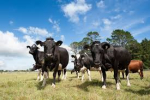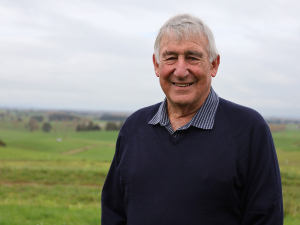Are you prepared for the new milk cooling regulations to take effect on June 1?
June is just around the corner and some farmers are known already to be compliant with the new regulations; others may need to assess their system to see if changes need to be made.
The new regulations require milk to be chilled to:
6°C within six hours of starting milking; or
6°C within two hours of completion of milking; and
must be held at 6°C or below until collection or the next milking; and
must not exceed 10°C during subsequent milkings.
Monitoring of these new regulations will require that these temperatures are proven:
at the end of calving, once the full herd is milking
during peak milk flow in November; and
during February.
If you haven’t checked your milk cooling system yet, I’d recommend testing it to see if it meets the new criteria before spending on an unnecessary upgrade.
A good place to start is to monitor the temperature of your vat over several milkings to see if it meets the new requirements. If not you should first check the performance of your plate heat exchanger (PHE), also known as a plate cooler.
Various ways exist to check if it’s performing efficiently; you could approach a rural professional or do it yourself.
Checking the plate cooler
The easiest way to check the plate cooler is to compare the temperature difference between the incoming temperature of the cooling water and the outgoing temperature of the milk leaving.
A PVC strip thermometer is an easy way to self-check. The thermometers have a paper backing which is peeled off and stuck directly onto a clean, dry metal pipe.
The temperature difference needs to be no more than 3°C to ensure your PHE is working efficiently.
If the temperature exchange isn’t under 3°C, make sure you have sufficient water flow and the PHE size is sufficient for your herd size.
Optimum water flow for the PHE is about 3L to every 1L of milk. To check this, hook up a flow meter to see how much water is going through the PHE and compare it to the peak flow from your milk lift pump.
Water entering your PHE also needs to be as cold as possible. Investigate taking it straight from your bore rather than storing in tanks. Don’t recycle PHE water unless it’s chilled between uses.
Wrap your vat
An inexpensive way to make your cooling system more efficient is to install a vat wrap, if it’s single skinned, which can save 15-25% of the energy required for milk cooling.
If you do need to make changes to your system, don’t leave it to the last minute, as the pressure on rural professionals or suppliers may get higher the closer we get to the regulation date.
If you’re looking at making changes, do your homework and get several quotes.
For more information on milk cooling visit dairynz.co.nz/milking/the-milking-plant or talk to your milk supply company.
• Nick Tait is a DairyNZ developer.


















